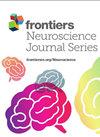Signal quality evaluation of an in-ear EEG device in comparison to a conventional cap system
IF 3.2
3区 医学
Q2 NEUROSCIENCES
引用次数: 0
Abstract
IntroductionWearable in-ear electroencephalographic (EEG) devices hold significant promise for integrating brain monitoring technologies into real-life applications. However, despite the introduction of various in-ear EEG systems, there remains a necessity for validating these technologies against gold-standard, clinical-grade devices. This study aims to evaluate the signal quality of a newly developed mobile in-ear EEG device compared to a standard scalp EEG system among healthy volunteers during wakefulness and sleep.MethodsThe study evaluated an in-ear EEG device equipped with dry electrodes in a laboratory setting, recording a single bipolar EEG channel using a cross-ear electrode configuration. Thirty healthy participants were recorded simultaneously using the in-ear EEG device and a conventional EEG cap system with 64 wet electrodes. Based on two recording protocols, one during a resting state condition involving alternating eye opening and closure with a low degree of artifact contamination and another consisting of a daytime nap, several quality measures were used for a quantitative comparison including root mean square (RMS) analysis, artifact quantification, similarities of relative spectral power (RSP), signal-to-noise ratio (SNR) based on alpha peak criteria, and cross-signal correlations of alpha activity during eyes-closed conditions and sleep activities. The statistical significance of our results was assessed through nonparametric permutation tests with False Discovery Rate (FDR) control.ResultsDuring the resting state, in-ear and scalp EEG signals exhibited similar fluctuations, characterized by comparable RMS values. However, intermittent signal alterations were noticed in the in-ear recordings during nap sessions, attributed to movements of the head and facial muscles. Spectral analysis indicated similar patterns between in-ear and scalp EEG, showing prominent peaks in the alpha range (8–12 Hz) during rest and in the low-frequency range during naps (particularly in the theta range of 4–7 Hz). Analysis of alpha wave characteristics during eye closures revealed smaller alpha wave amplitudes and slightly lower signal-to-noise ratio (SNR) values in the in-ear EEG compared to scalp EEG. In around 80% of cases, cross-correlation analysis between in-ear and scalp signals, using a contralateral bipolar montage of 64 scalp electrodes, revealed significant correlations with scalp EEG (耳内脑电图设备与传统帽子系统的信号质量评估比较
导言:可佩戴的耳内式脑电图(EEG)设备在将脑监测技术整合到实际应用中方面大有可为。然而,尽管推出了各种耳内脑电图系统,但仍有必要将这些技术与黄金标准的临床级设备进行验证。本研究旨在评估新开发的移动式耳内脑电图设备与标准头皮脑电图系统在健康志愿者清醒和睡眠时的信号质量。研究人员同时使用耳内脑电图设备和配有 64 个湿电极的传统脑电图帽系统对 30 名健康参与者进行了记录。根据两种记录方案(一种是在静息状态下交替睁眼和闭眼,伪影污染程度较低;另一种是在白天小睡时进行记录),采用了多种质量测量方法进行定量比较,包括均方根(RMS)分析、伪影量化、相对频谱功率(RSP)的相似性、基于阿尔法峰标准的信噪比(SNR),以及闭眼状态下阿尔法活动和睡眠活动的交叉信号相关性。结果在静息状态下,耳内和头皮脑电信号表现出相似的波动,其特点是均方根值相当。然而,在午睡时,耳内记录会出现间歇性信号变化,这是由于头部和面部肌肉的运动造成的。频谱分析表明,耳内和头皮脑电图的模式相似,休息时α波范围(8-12赫兹)和小睡时低频范围(尤其是4-7赫兹的θ波范围)的峰值突出。对闭眼时阿尔法波特征的分析表明,与头皮脑电图相比,耳内脑电图的阿尔法波振幅较小,信噪比(SNR)值略低。在大约 80% 的病例中,使用 64 个头皮电极的对侧双极蒙太奇进行耳内信号和头皮信号之间的交叉相关性分析,发现与头皮脑电图有显著相关性(p & lt; 0.01),尤其是在 FT11-FT12 和 T7-T8 电极衍生物中。虽然头部和面部肌肉收缩会造成轻微的信号衰减,但耳内式设备为长期脑电图记录提供了广阔的应用前景,尤其是在需要提高舒适度和用户友好性的情况下。
本文章由计算机程序翻译,如有差异,请以英文原文为准。
求助全文
约1分钟内获得全文
求助全文
来源期刊

Frontiers in Neuroscience
NEUROSCIENCES-
CiteScore
6.20
自引率
4.70%
发文量
2070
审稿时长
14 weeks
期刊介绍:
Neural Technology is devoted to the convergence between neurobiology and quantum-, nano- and micro-sciences. In our vision, this interdisciplinary approach should go beyond the technological development of sophisticated methods and should contribute in generating a genuine change in our discipline.
 求助内容:
求助内容: 应助结果提醒方式:
应助结果提醒方式:


